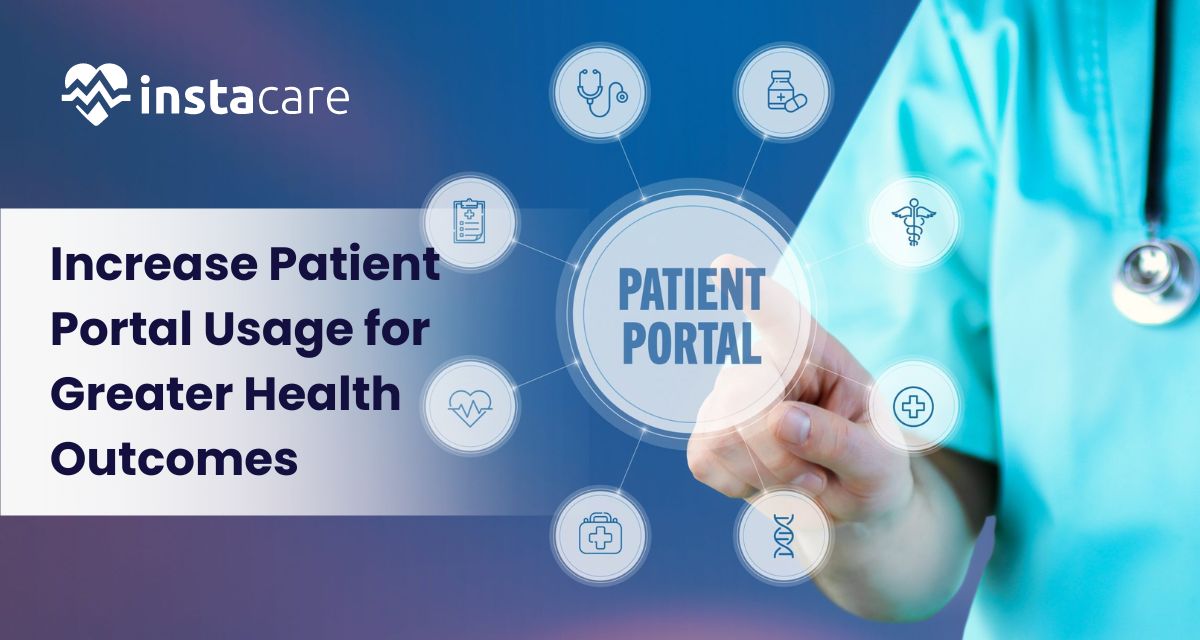Last updated on Wednesday, 28, August, 2024
Table of Contents
Increase Patient Portal Usage for Greater Health Outcomes
Patient engagement through participation in their own care is essential for healthcare providers, who are particularly vital in the digital world today, since patient portals link them back and empower them to a greater degree. Secure web platforms afford them access to personal medical information, communication with their care team, appointment scheduling, and prescription refill requests from the convenience of their homes.
However, the real value in a patient portal is driven by meaningful engagement and enhancing health outcomes. The sad thing is that too many healthcare organizations really struggle to get their patients to use and regularly engage with these portals. Rest assured that if your practice is struggling with the patient portal, there are some simple things that can be done in order to generate higher patient engagement and thus reap the full potential of this feature.
In this blog post, we will discuss why increasing patient portal usage is critical and will explore 5 tips that could get your patients interested in logging into their accounts and taking a proactive approach towards patient self-management.
The Benefits of Robust Patient Portal Engagement
Among a host of other benefits, active patient use and engagement of their healthcare provider’s patient portal can have some positive results, including:
Enhanced Communication and Coordination
With features for secure messaging, it becomes quite easy for patients to get in touch with their care team in case they have any questions or would just like to share an update regarding their condition. Such transparency and openness of communication build better relationships between the patient and the health provider so that all parties are on the same page with what needs to be done next or what the plan is.
Many of these patient portals include the ability to request refills of a prescription, view a medication history, and independently set reminders. Medication adherence can be vital towards controlling chronic disease and limiting chronic illness complications.
Improved Patient Satisfaction
Empowered and engaged patients might thus feel more satisfied with the overall quality of care. This will actually satisfy the patient, hence likely to stick around in your practice and refer others, which again is good for business.
Driving Patient Portal Adoption and Engagement
Now that we’ve taken a closer look at the key benefits, let’s discuss in greater detail five proved strategies to improve the bar regarding the adoption of the patient portal for your healthcare organization. These are as follows:
Ease Registration and Onboarding
First and foremost, the process of registration for a patient portal should be made easy and user-friendly for any user. Provide clear instructions online and face-to-face that guide the patients through the steps required for registration. Perhaps even offer in-person assistance or online tutorials to get people who aren’t as technology-savvy set up.
Also, ensure that new patient onboarding emails mention the portal and its features and benefits. Encourage your staff to demonstrate to patients the capabilities and benefits of the portal. It will ensure, in turn, that the portal is set up as part and parcel of the patient’s experience from the very outset.
Promote the Portal at Multiple Touch points
The notice about the new patient portal should not only be limited to a pincer approach from one to two communication channels. A multi-pronged approach should promote the portal, and in addition to the above, you should help to spread the news about it with all kinds of touch points:
- In-office signage and brochures
- Your practice website and its social media channels
- Email newsletters/ campaigns and text messages
- Oral reminders from the doctors/nurses or the front desk staff each time the patient comes in
Repetition is key, so keep reminding patients about the benefits of the portal and urge them to log in and explore its features. That will bring the portal to mind and make it feel as if it is part of the very texture of their health journey.
Call Out Specific Features of the Portal and Use Cases
Some patients are the type to jump right into a new portal and fumble their way through, while others maybe not so much. Point out the portal features that will be particularly important to your patients and make those features known.
For instance, if you have many patients with chronic illnesses, explain how this is going to help them better manage their symptoms and test results, staying in touch with the team managing the patient’s care. Alternatively, if appointment scheduling is the sore spot, show how easy and quickly one can request or reschedule an appointment right from or through the portal.
It would be easier for your patients to relate and get a better grip on the value of the portal with all these real-life examples and use cases provided.
Incentivize Portal Engagement
Use incentive programs to drive more patients to use the portal on a regular basis. This may be in the form of some kind of reward or small gift, such as a gift card, merchandise, or charity donation, for the completion of certain portal tasks, including:
- A patient’s online profile
- Appointment reminders
- Accessing test results
Engaging in secure message exchanges with their provider
You can also gamify the experience by allowing patients to earn “points” for various portal actions, which they can then redeem for prizes. Creating a sense of friendly competition and recognition can go a long way in boosting portal usage.
Monitor Usage and Continuously Improve
Ultimately, it is very key to monitor and analyze the performance of the patient portal on a timely basis. The KPIs need to be tracked and monitored to ensure registration rates, frequency of logins, use of features, and patient satisfaction. Use these insights to identify areas for improvement and make iterative changes to the portal’s design, content, and functionality.
Meanwhile, gather direct feedback from your patients. This may be through a portal, but also by doing surveys or focus groups with them. The pain points, preferences, and suggestions of the people concerned may be useful in making this portal work for them. The key to success is continuous optimization Activating Patient Portal Engagement
Conclusion
By employing these strategies, what was initially a low level of engagement in patient portal usage can be overcome, with this powerful tool instead being deployed to the benefit of your patients. Investing in patients, bettering the engagement of your patient portal, is an investment in the long-term well-being of your patients and your successful healthcare practice. Start putting these strategies into place today and watch your portal turn into a vital hub of activity for patient-centered care. —supervisors sustain high levels of patient experience and engagement.
FAQs
Why is it necessary for a patient to take an active role in utilizing the healthcare provider’s patient portal?
A patient reaping benefit from using the patient portal sees an increase in health management, improvement in monitoring of health, communication of health teams, compliance with medication, facilitation in scheduling and follow-up of appointments, and rise in patient satisfaction. The patient can, therefore, be more involved in his care through the use of the patient portal and has thus achieved better overall health outcomes.
What are common complaints or complex issues healthcare providers face in regard to patient utilization of the patient portal?
Due to issues such as lack of technology adoption, forgetfulness, or an outright misunderstanding of the portal’s value, many people may be resistant to taking up the patient portal. In most cases, healthcare providers are challenged to increase awareness about the portal and have patients log in more regularly and engage with the functionality on offer. The smaller the usage of the portal is, the less it really can be effective in reaching better health outcomes.
What are some strategies that health care providers can use to enhance patient engagement on the portal?
Some of the major strategies include:
- Ease as much as possible in the registration and onboarding process.
- Promote the portal to its patients through in-office signage, the practice website, and direct outreach.
- Shine a light on portal feature highlights and use case scenarios most applicable to patient populations.



